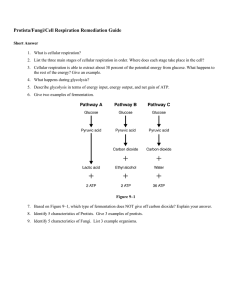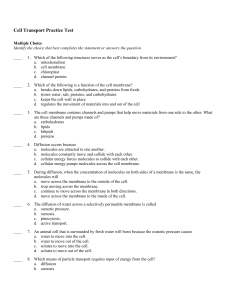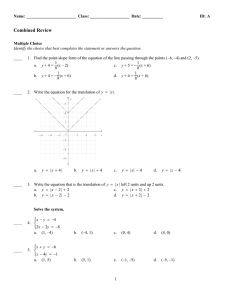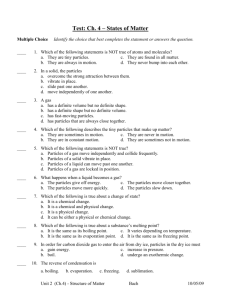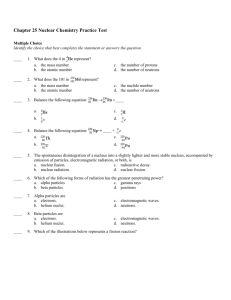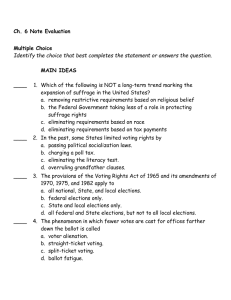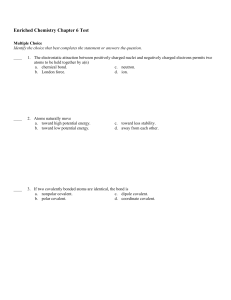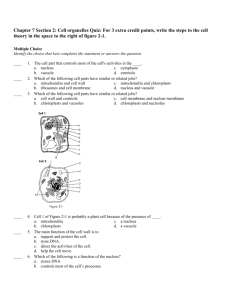Scientific Investigation Questions
advertisement
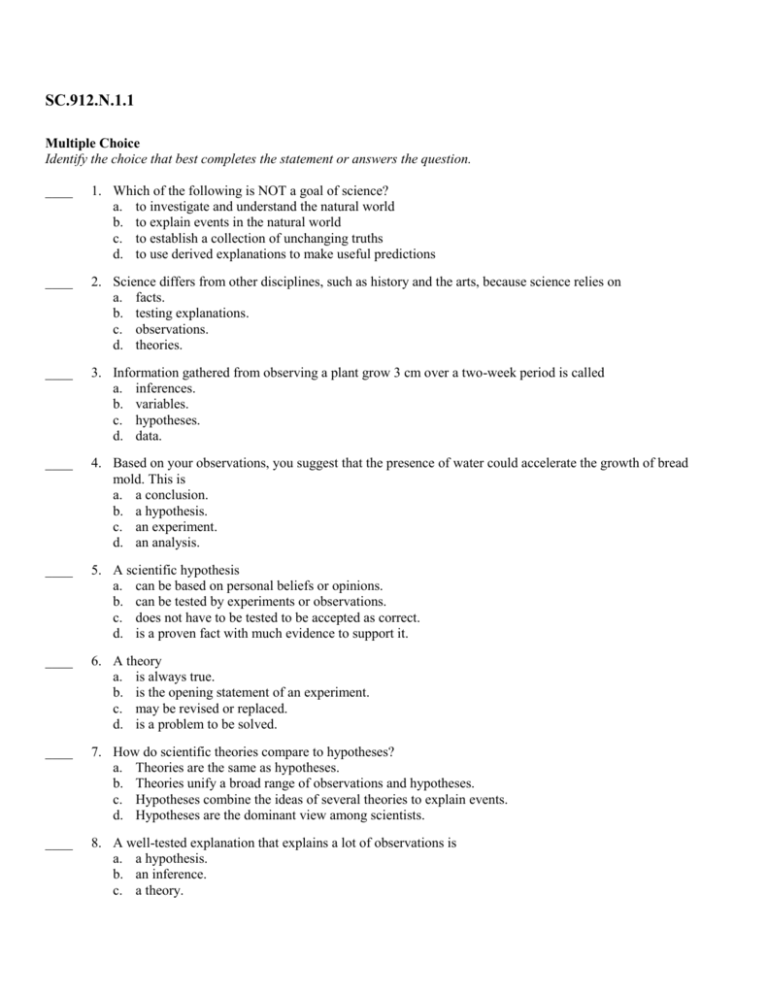
SC.912.N.1.1 Multiple Choice Identify the choice that best completes the statement or answers the question. ____ 1. Which of the following is NOT a goal of science? a. to investigate and understand the natural world b. to explain events in the natural world c. to establish a collection of unchanging truths d. to use derived explanations to make useful predictions ____ 2. Science differs from other disciplines, such as history and the arts, because science relies on a. facts. b. testing explanations. c. observations. d. theories. ____ 3. Information gathered from observing a plant grow 3 cm over a two-week period is called a. inferences. b. variables. c. hypotheses. d. data. ____ 4. Based on your observations, you suggest that the presence of water could accelerate the growth of bread mold. This is a. a conclusion. b. a hypothesis. c. an experiment. d. an analysis. ____ 5. A scientific hypothesis a. can be based on personal beliefs or opinions. b. can be tested by experiments or observations. c. does not have to be tested to be accepted as correct. d. is a proven fact with much evidence to support it. ____ 6. A theory a. is always true. b. is the opening statement of an experiment. c. may be revised or replaced. d. is a problem to be solved. ____ 7. How do scientific theories compare to hypotheses? a. Theories are the same as hypotheses. b. Theories unify a broad range of observations and hypotheses. c. Hypotheses combine the ideas of several theories to explain events. d. Hypotheses are the dominant view among scientists. ____ 8. A well-tested explanation that explains a lot of observations is a. a hypothesis. b. an inference. c. a theory. d. a controlled experiment. ____ 9. What advance in technology made the discovery of cells possible? a. the centrifuge b. the particle accelerator c. the ultraviolet light d. the microscope ____ 10. Electron microscopes can reveal details a. only in specimens that are still alive. b. about the different colors of cell structures. c. of cell structures only once they are stained. d. 1000 times smaller than those visible in light microscopes. ____ 11. Which type of microscope can produce three-dimensional images of a cell’s surface? a. transmission electron microscope b. scanning electron microscope c. simple light microscope d. compound light microscope SC.912.N.1.1 Answer Section MULTIPLE CHOICE 1. ANS: OBJ: TOP: 2. ANS: OBJ: MSC: 3. ANS: OBJ: STA: 4. ANS: OBJ: STA: MSC: 5. ANS: OBJ: STA: MSC: 6. ANS: OBJ: TOP: 7. ANS: OBJ: TOP: 8. ANS: OBJ: TOP: 9. ANS: OBJ: TOP: 10. ANS: OBJ: STA: 11. ANS: OBJ: STA: MSC: C PTS: 1 DIF: L2 REF: p. 5 1.1.1 State the goals of science. STA: SC.912.N.1.1.1 | SC.912.N.2.1 | SC.912.N.2.2 Foundation Edition MSC: knowledge B PTS: 1 DIF: L3 REF: p. 5 1.1.1 State the goals of science. STA: SC.912.N.1.1.1 | SC.912.N.2.1 | SC.912.N.2.2 evaluation D PTS: 1 DIF: L2 REF: p. 8 1.1.2 Describe the steps used in scientific methodology. SC.912.N.1.1.6 | SC.912.N.1.1.8 | SC.912.N.1.2 MSC: application B PTS: 1 DIF: L2 REF: p. 7 1.1.2 Describe the steps used in scientific methodology. SC.912.N.1.1.6 | SC.912.N.1.1.8 | SC.912.N.1.2 TOP: Foundation Edition analysis B PTS: 1 DIF: L2 REF: p. 9 1.1.2 Describe the steps used in scientific methodology. SC.912.N.1.1.6 | SC.912.N.1.1.8 | SC.912.N.1.2 TOP: Foundation Edition synthesis C PTS: 1 DIF: L2 REF: p. 13 1.2.3 Explain what a scientific theory is. STA: SC.912.N.3.1 | SC.912.N.3.4 Foundation Edition MSC: comprehension B PTS: 1 DIF: L2 REF: p. 13 1.2.3 Explain what a scientific theory is. STA: SC.912.N.3.1 | SC.912.N.3.4 Foundation Edition MSC: analysis C PTS: 1 DIF: L1 REF: p. 13 1.2.3 Explain what a scientific theory is. STA: SC.912.N.3.1 | SC.912.N.3.4 Foundation Edition MSC: knowledge D PTS: 1 DIF: L1 REF: p. 191 7.1.1 State the cell theory. STA: SC.912.L.14.1 | SC.912.L.14.4 Foundation Edition MSC: comprehension D PTS: 1 DIF: L1 REF: p. 192 7.1.2 Describe how the different types of microscopes work. SC.912.L.14.1 | SC.912.L.14.4 MSC: knowledge B PTS: 1 DIF: L2 REF: p. 192 7.1.2 Describe how the different types of microscopes work. SC.912.L.14.1 | SC.912.L.14.4 TOP: Foundation Edition comprehension
